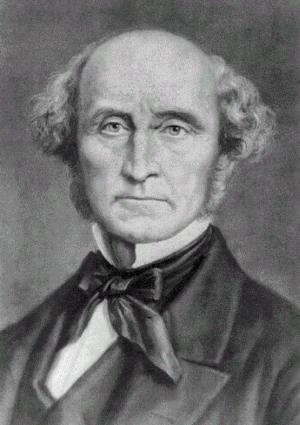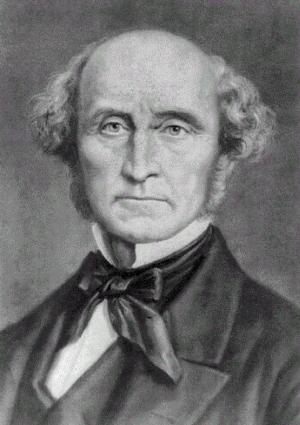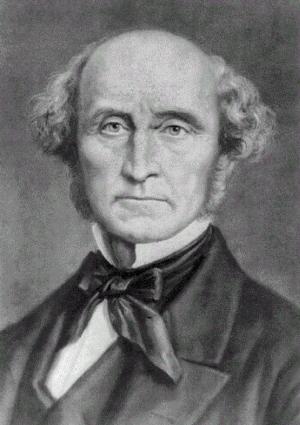| Author: | John Mill | ISBN: | 1230000275158 |
| Publisher: | AS Team | Publication: | October 20, 2014 |
| Imprint: | Language: | English |
| Author: | John Mill |
| ISBN: | 1230000275158 |
| Publisher: | AS Team |
| Publication: | October 20, 2014 |
| Imprint: | |
| Language: | English |
The book has an active table of contents for easy access to each chapter.
John Stuart Mill made essential contributions to social theory, political theory and political economy. He has been called "the most influential English-speaking philosopher of the nineteenth century".
However, John Mill was also an important contributor for the foundation of modern monetary theory. John Mill's views on monetary theory were developed with his methodological approach, in which reactions to practical problems directed theoretical inquiry, instead of theory developing separately from policy questions. Mill’s focus on monetary theory at his time was how to deal with the periodic recessions and financial disruptions that were occurring.
The Bank Charter Act 1844 was an Act of the United Kingdom that was passed under the government of Robert Peel to restrict the powers of British banks and gave exclusive note-issuing powers to the central Bank of England. It was one of the major Bank of England Acts from 1694 to 1892. Under the Act, only the Bank of England could issue new banknotes, and issuing banks would have to withdraw their existing notes in the event of their being the subject of a takeover. The Act was a victory for the British currency school, who argued that the issue of new banknotes was a major cause of price inflation.
John Mill looked into the economic aspect of the monetary theory through this essay. He argued in this essay “In the first place, what is your opinion as to the policy of imposing by law any restriction upon the Directors of the Bank of England with respect to the issue of notes? My opinion is that there should not be any restriction by law, except that of convertibility, which appears to me to be sufficient for all the purposes for which restriction is intended.”
John Mill’s works influenced Irving Fisher who completed his great works such as The Debt-deflation Theory of Great Depressions and The Theory of Interest .
The bank acts across developed and developing countries are still evolving. For those readers who need to learn the history of the Bank Charter Act 1844 and Mill’s thoughts on the bank acts of England in a quick way, this is the right one for them.
John Mill is known as one of the founders of economics. This is a must-read book for people who are interested in the deepest thoughts about the Bank Acts and their impact on economy by John Mill, one of the greatest thinkers on the planet.
The book has an active table of contents for easy access to each chapter.
John Stuart Mill made essential contributions to social theory, political theory and political economy. He has been called "the most influential English-speaking philosopher of the nineteenth century".
However, John Mill was also an important contributor for the foundation of modern monetary theory. John Mill's views on monetary theory were developed with his methodological approach, in which reactions to practical problems directed theoretical inquiry, instead of theory developing separately from policy questions. Mill’s focus on monetary theory at his time was how to deal with the periodic recessions and financial disruptions that were occurring.
The Bank Charter Act 1844 was an Act of the United Kingdom that was passed under the government of Robert Peel to restrict the powers of British banks and gave exclusive note-issuing powers to the central Bank of England. It was one of the major Bank of England Acts from 1694 to 1892. Under the Act, only the Bank of England could issue new banknotes, and issuing banks would have to withdraw their existing notes in the event of their being the subject of a takeover. The Act was a victory for the British currency school, who argued that the issue of new banknotes was a major cause of price inflation.
John Mill looked into the economic aspect of the monetary theory through this essay. He argued in this essay “In the first place, what is your opinion as to the policy of imposing by law any restriction upon the Directors of the Bank of England with respect to the issue of notes? My opinion is that there should not be any restriction by law, except that of convertibility, which appears to me to be sufficient for all the purposes for which restriction is intended.”
John Mill’s works influenced Irving Fisher who completed his great works such as The Debt-deflation Theory of Great Depressions and The Theory of Interest .
The bank acts across developed and developing countries are still evolving. For those readers who need to learn the history of the Bank Charter Act 1844 and Mill’s thoughts on the bank acts of England in a quick way, this is the right one for them.
John Mill is known as one of the founders of economics. This is a must-read book for people who are interested in the deepest thoughts about the Bank Acts and their impact on economy by John Mill, one of the greatest thinkers on the planet.















